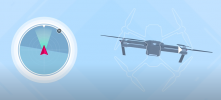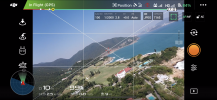- Joined
- Feb 8, 2018
- Messages
- 8,536
- Reactions
- 13,799
- Age
- 56
The best way used to be ATTI mode...
Atti mode can with much caution I might add . be used to determine the direction of the wind but not how strong the winds are.
With that said if it is really windy , Atti mode should be your last resort.
Phantomrain.org
Gear to fly your Air 2 in the Rain and Float on water.
Last edited:














